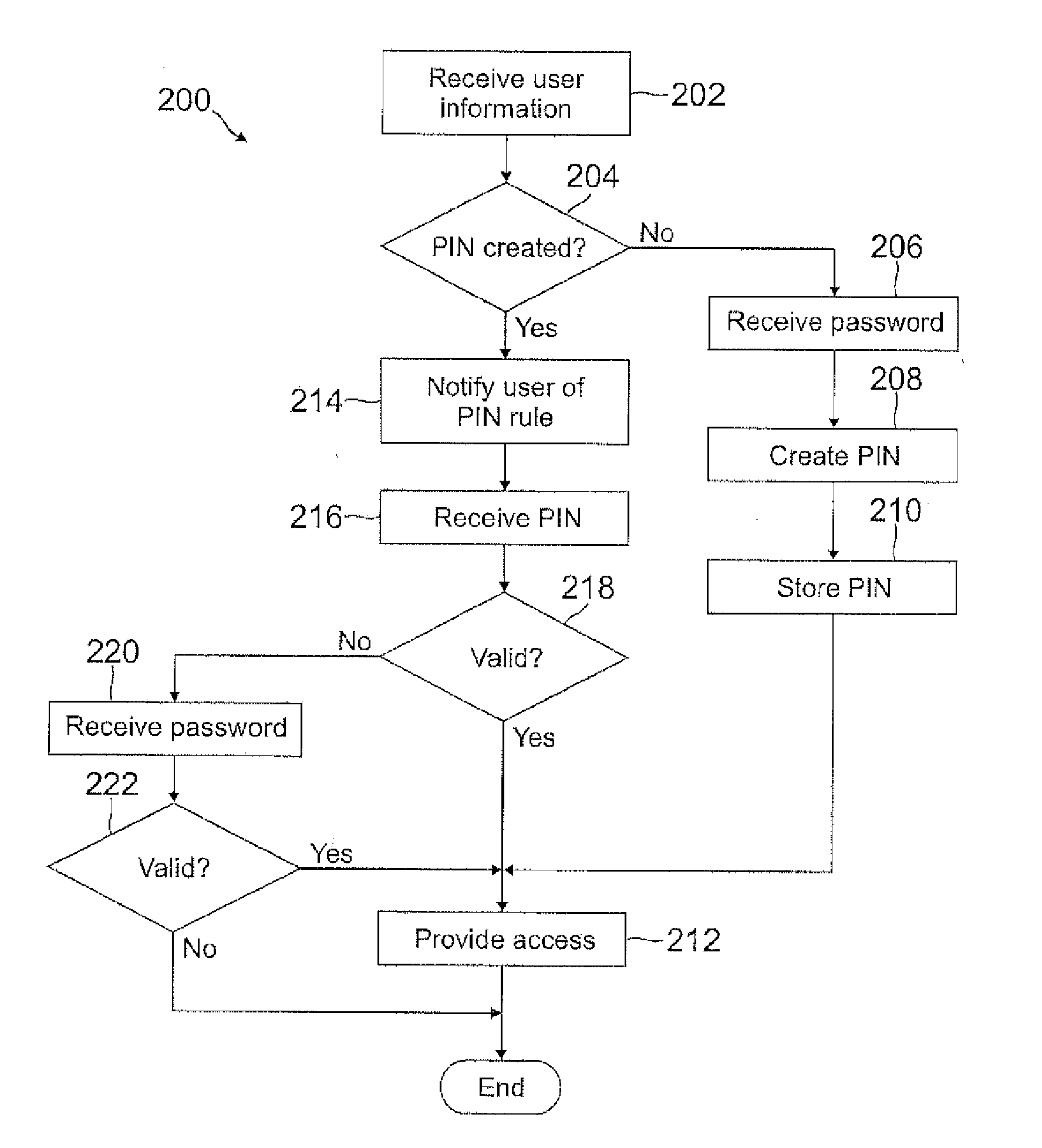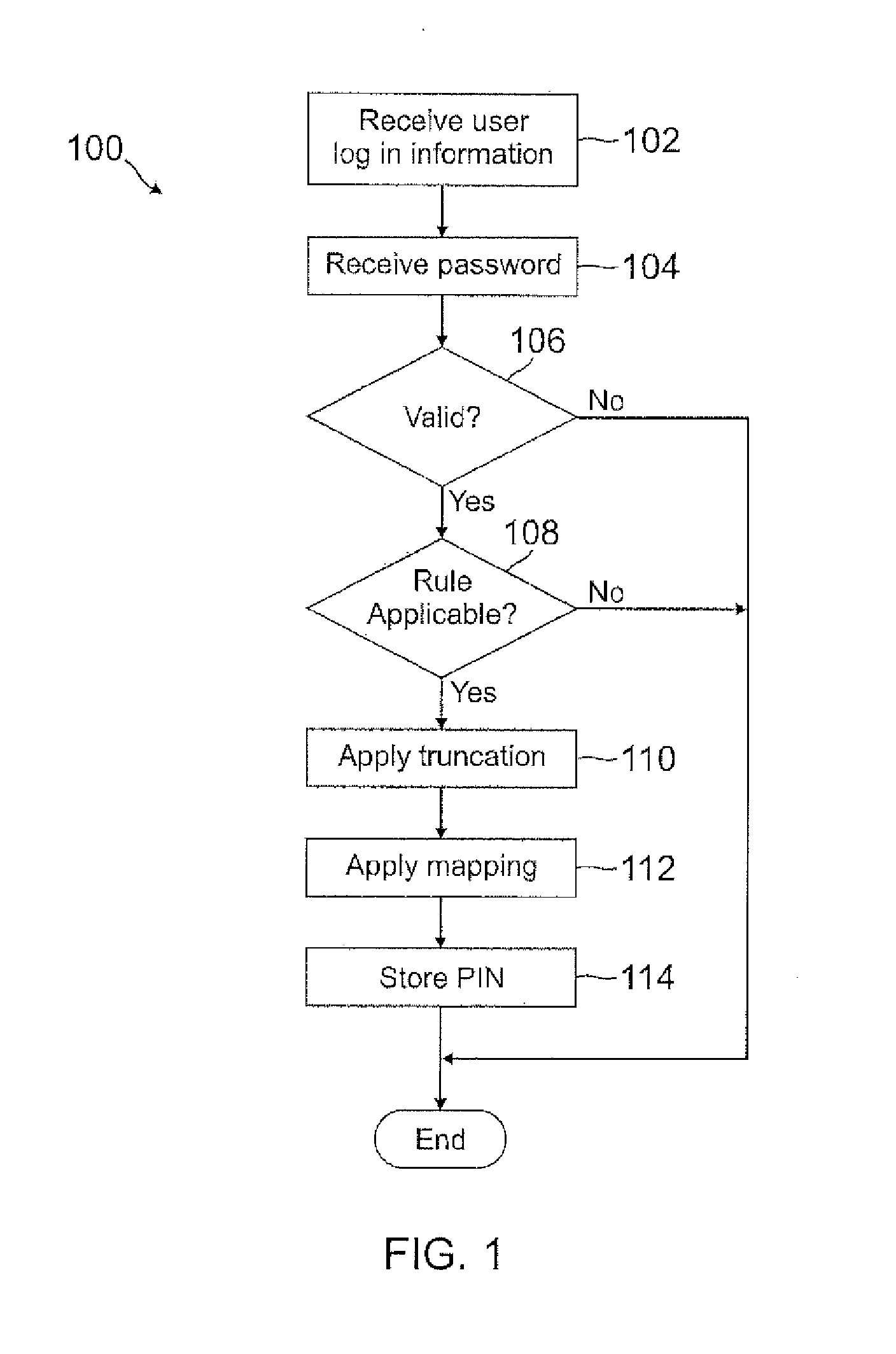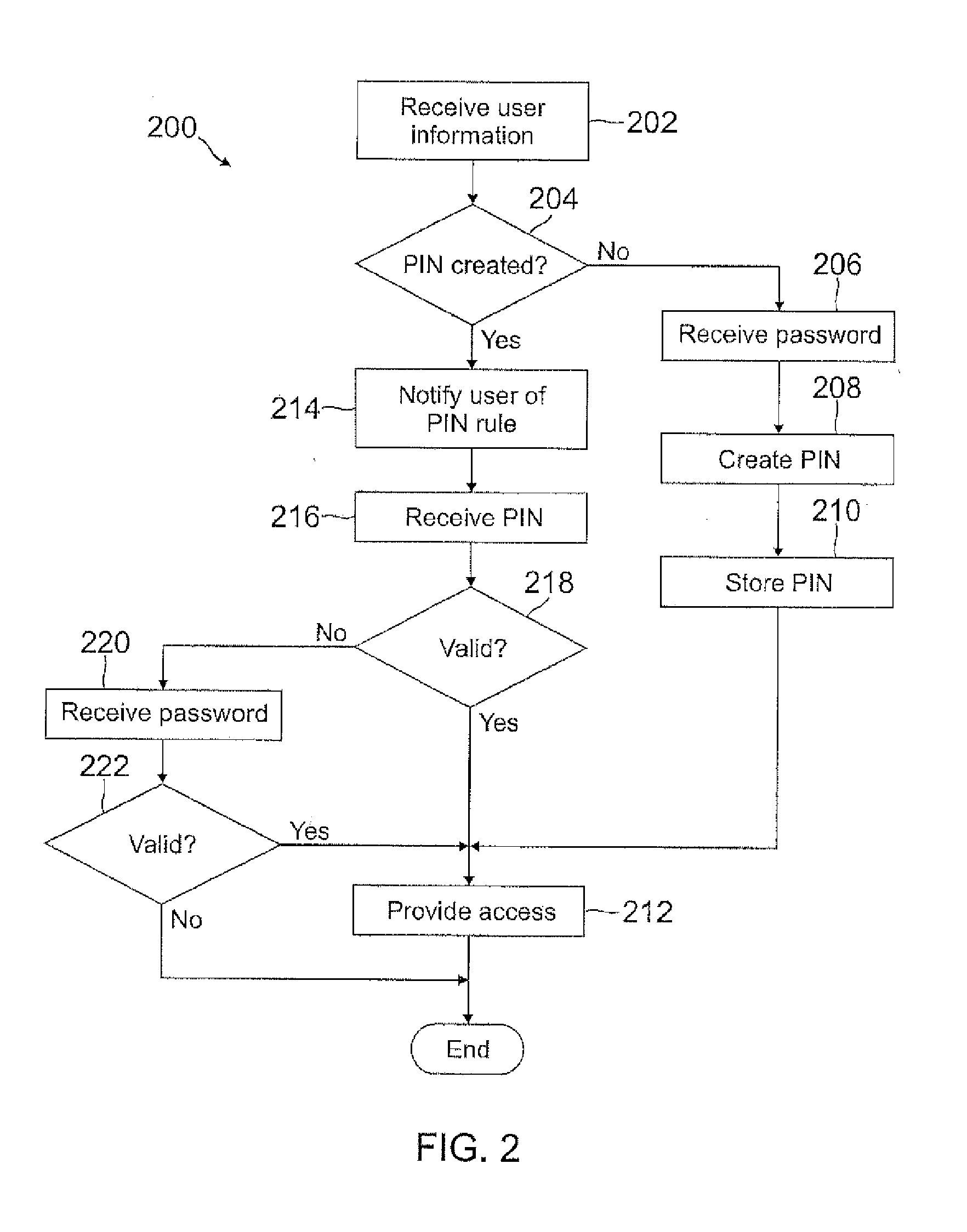Automatic pin creation using password
a pin creation and password technology, applied in the field of personal identification number (pin) creation, can solve the problems of pins being less secure than passwords, pins being less secure, and difficult to remember, so as to achieve more friction-less experience, different mappings, and easy to remember
- Summary
- Abstract
- Description
- Claims
- Application Information
AI Technical Summary
Benefits of technology
Problems solved by technology
Method used
Image
Examples
Embodiment Construction
[0019]A user may have many different accounts or sites that require a password for entry or access. A user may have one password for all, a few passwords for all, or a different password for each account or site. Typically, if the user has numerous accounts, a few passwords are used for all the accounts, with some passwords used with multiple different accounts.
[0020]When the user accesses an account or site, such as through the user's PC, smart phone, tablet, or laptop, the user enters the requested password. If the site authenticates the password, and a PIN had not been previously created, the site automatically creates a PIN, if applicable, with the password by converting characters (which may include letters, numbers, and symbols) to numbers and truncating if needed. This depends on the site requirements and other factors. For example, if the site requires a six number PIN for mobile devices (or other devices), then the password is truncated to a six number PIN. If the user pass...
PUM
 Login to View More
Login to View More Abstract
Description
Claims
Application Information
 Login to View More
Login to View More - R&D
- Intellectual Property
- Life Sciences
- Materials
- Tech Scout
- Unparalleled Data Quality
- Higher Quality Content
- 60% Fewer Hallucinations
Browse by: Latest US Patents, China's latest patents, Technical Efficacy Thesaurus, Application Domain, Technology Topic, Popular Technical Reports.
© 2025 PatSnap. All rights reserved.Legal|Privacy policy|Modern Slavery Act Transparency Statement|Sitemap|About US| Contact US: help@patsnap.com



